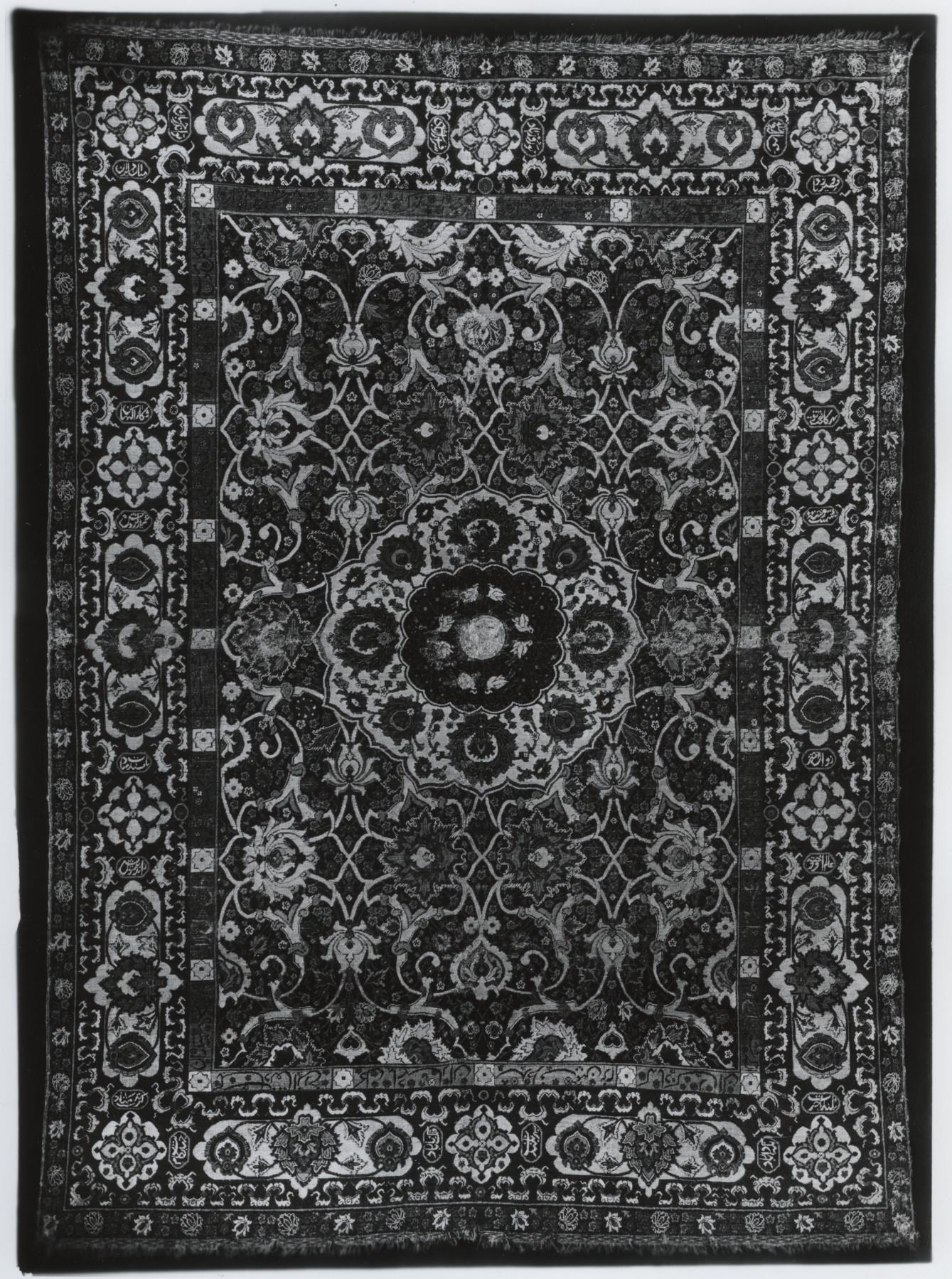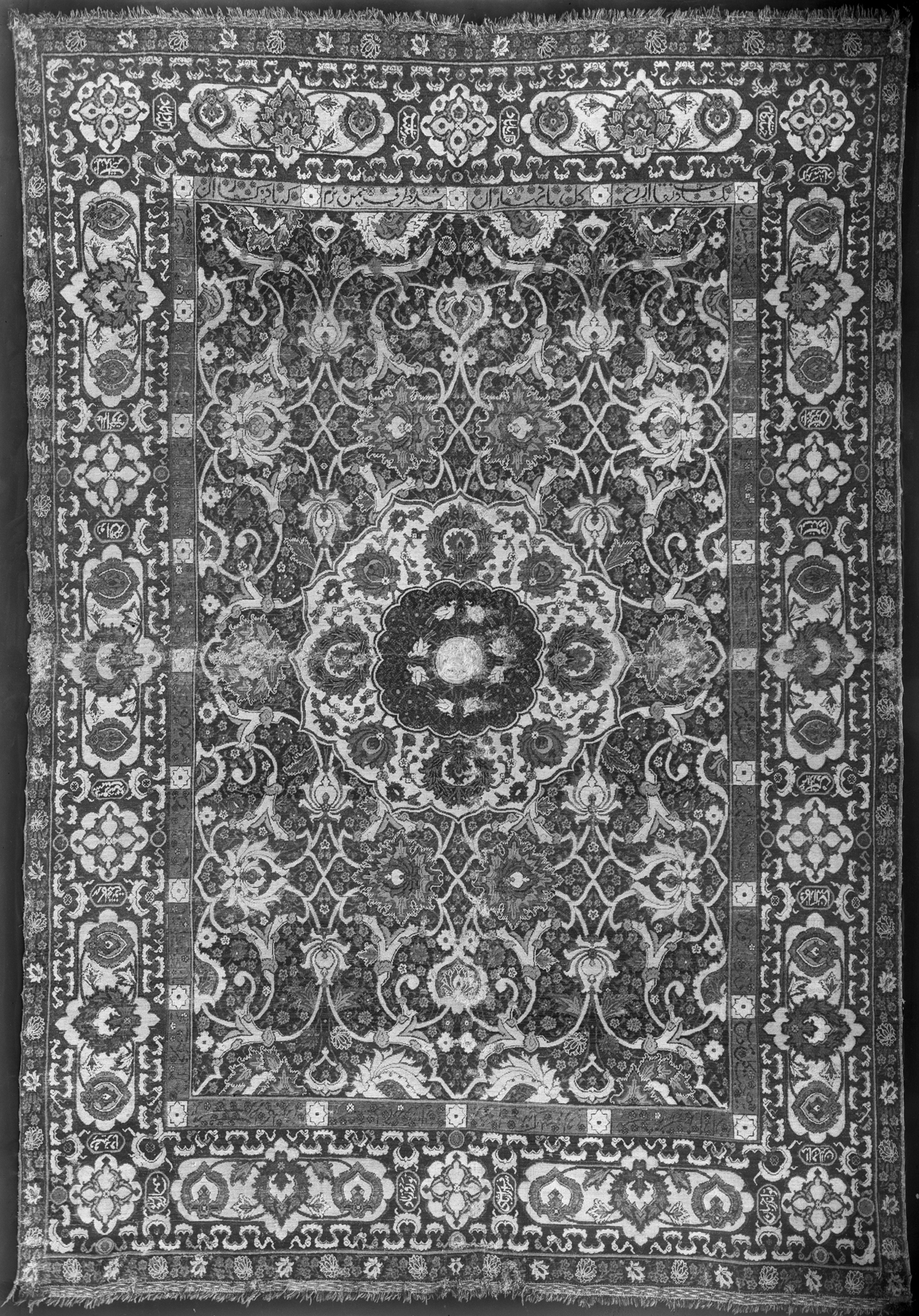Medallion Carpet
(Islamic World , Textiles and Furniture )
Carpets are perhaps the best known of all artworks from the Islamic world. Woven in a wide range of colors and patterns, pile carpets covered the floors of humble dwellings, courtly palaces, and religious institutions from earliest Islamic times. Because they are susceptible to wear and tear, relatively few carpets made before the 16th century have survived.
The medallion carpet is among the most familiar and popular of all rug types. The design is almost always symmetrical and often features a scalloped or starburst medallion in the center, set against a floral field and framed by wide borders filled with still more flowers, usually in panels. This fine (but typically worn) example also includes pairs of birds arranged around the center and verses of Persian poetry in the borders.
Provenance
Provenance (from the French provenir, 'to come from/forth') is the chronology of the ownership, custody, or location of a historical object. Learn more about provenance at the Walters.
Charles T. Yerkes Sale, New York, 1910; Henry Walters, Baltimore, 1910 [mode of acquisition unknown]; Walters Art Museum, 1931, by bequest.
Conservation
| Date | Description | Narrative |
|---|---|---|
| 4/20/1960 | Treatment | repaired; cleaned |
| 9/17/1996 | Examination | examined for condition |
| 8/1/2001 | Treatment | cleaned; repared; mounted |
Geographies
Iran (Place of Origin)
Measurements
L: 83 × W: 59 in. (210.82 × 149.9 cm); Mounted L: 87 3/16 × W: 61 1/4 × D: 1 in. (221.5 × 155.5 × 2.54 cm)
Credit Line
Acquired by Henry Walters, 1910
Location in Museum
Not on view
Accession Number
In libraries, galleries, museums, and archives, an accession number is a unique identifier assigned to each object in the collection.
In libraries, galleries, museums, and archives, an accession number is a unique identifier assigned to each object in the collection.
81.7






